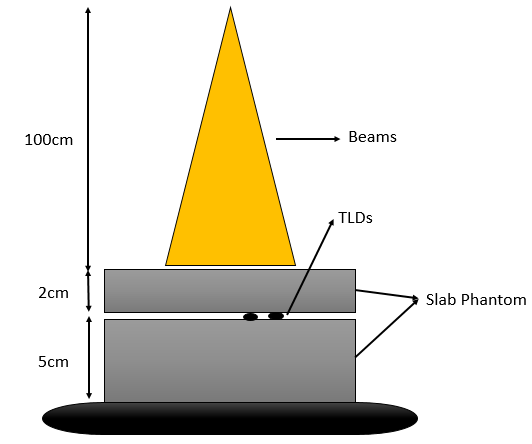-
Home
-
About JCTR
-
Gold Open Access
-
Issues
-
Editorial board
-
Author guidelines
-
Publication fees
-
Online first
-
Special issues
-
News
-
Publication ethics
-
Partners
-
Submit your manuscript
-
Submit your review report
-
Editorial Office
-

This work is licensed under a Creative Commons Attribution-NonCommercial 4.0 International License. ISSN print: 2382-6533 ISSN online: 2424-810X
Volume 7 Issue 1
A comparison of skin dose estimation between thermoluminescent dosimeter and treatment planning system in prostatic cancer: A brachytherapy technique
Mehrsa Majdaeen, Soheila Refahi, Amin Banaei, Mahdieh Ghadimi, Mahdieh Afkhami Ardekani, Nouraddin Abdi Goushbolagh*, Hamed Zamani
Majdaeen et al. J Clin Transl Res 2021; 7(1):6
Published online: January 27, 2021
Abstract
Aims: This study aimed to compare the skin dose calculated by treatment planning system (TPS) and measured with thermoluminescent dosimeters (TLDs) in brachytherapy of prostatic cancer to show the skin TLD dosimetry as an appropriate quality assurance procedure for TPS dose calculations.
Methods: The skin dose of 15 patients with prostatic cancer treated by high dose rate (HDR) brachytherapy technique were assessed by two types of TLD dosimeters (GR-200 and TLD-100). The TLDs were placed on the patient's skin at 3 different points (anterior, left, and right) using five TLDs for each point. The dose values of TLDs and TPS were compared using paired t-test and the percentages of difference were reported.
Results: There was a good agreement between TPS calculations and TLDs measurements for both of the GR-200 and TLD-100 dosimeters. The mean skin dose values for anterior, left, and right points were 65.06 ± 21.88, 13.88 ± 4.1, and 10.05 ± 4.39 cGy, respectively, for TPS. These values were 65.70 ± 23.2, 14.51 ± 4.3, and 10.54 ± 5 cGy for GR-200, and 64.22 ± 23.5, 13.43 ± 4.4, and 9.99 ± 4.1 cGy for TLD-100, respectively.
Conclusions: The TPS skin dose calculations in brachytherapy of prostatic cancer had a good agreement with the TLD-100 and GR-200 measurements at the 3 different points on patients’ skin. TLD-100 had lower differences with TPS calculations compared to GR-200.
Relevance for patients: The outcome of this research shows that for people with prostatic cancer, TPS can estimate accurately the skin dose of different points including anterior, left, and right in brachytherapy technique.

DOI: http://dx.doi.org/10.18053/jctres.07.202101.006
Author affiliation
1. Department of Radiotherapy and Oncology, Razi Hospital, Guilan University of Medical Sciences, Rasht, Iran
2. Department of Medical Physics, Faculty of Medicine, Ardabil University of Medical Sciences, Ardabil, Iran
3. Department of Medical Physics, Faculty of Medical Sciences, Tarbiat Modares University, Tehran, Iran
4. Department of Medical Physics, Faculty of Medicine, Shahid Sadoughi University of Medical Sciences, Yazd, Iran
5. Department of Radiology, Faculty of Para-Medicine, Hormozgan University of Medical Sciences, Bandar-Abbas, Iran
*Corresponding author
Nouraddin Abdi Goushbolagh
Department of Medical Physics, Faculty of Medicine, Shahid Sadoughi University of Medical Sciences, Yazd, Iran
Email: nouraddiin@gmail.com
Handling editor:
Michal Heger
Department of Pharmaceutics, Utrecht University, the Netherlands
Department of Pharmaceutics, Jiaxing University Medical College, Zhejiang, China

